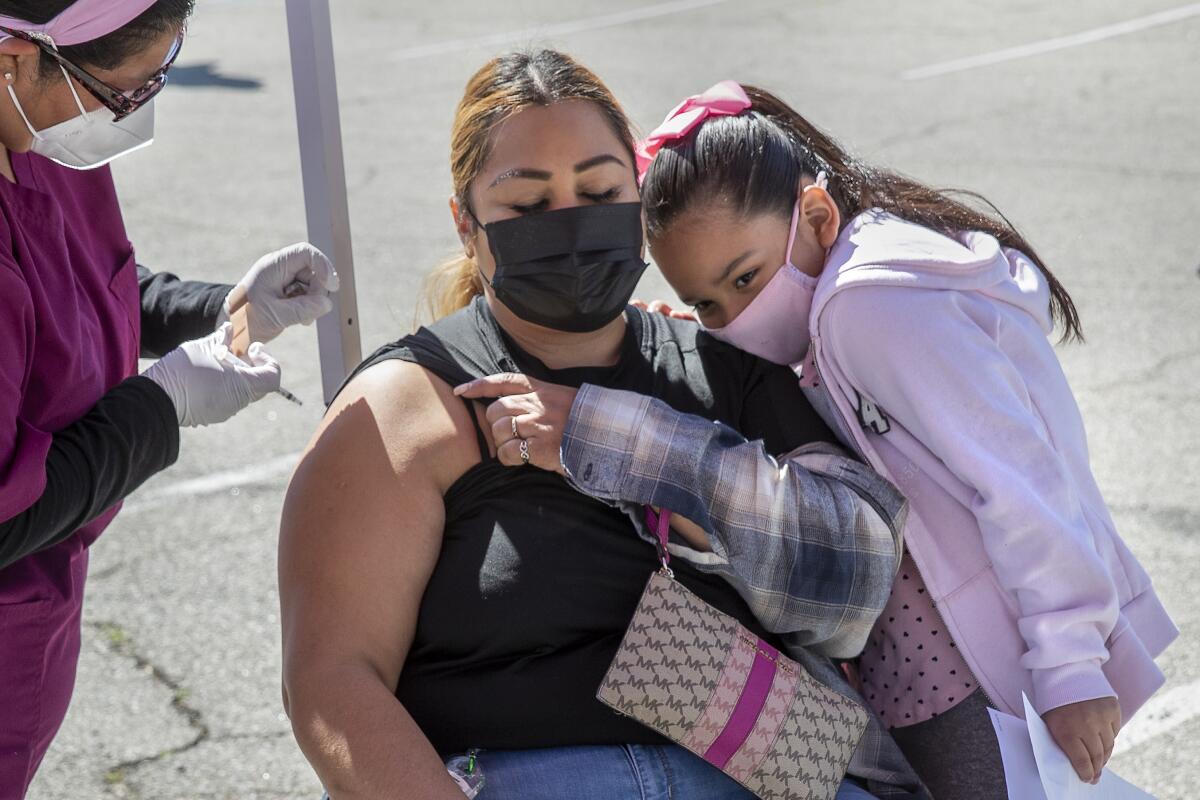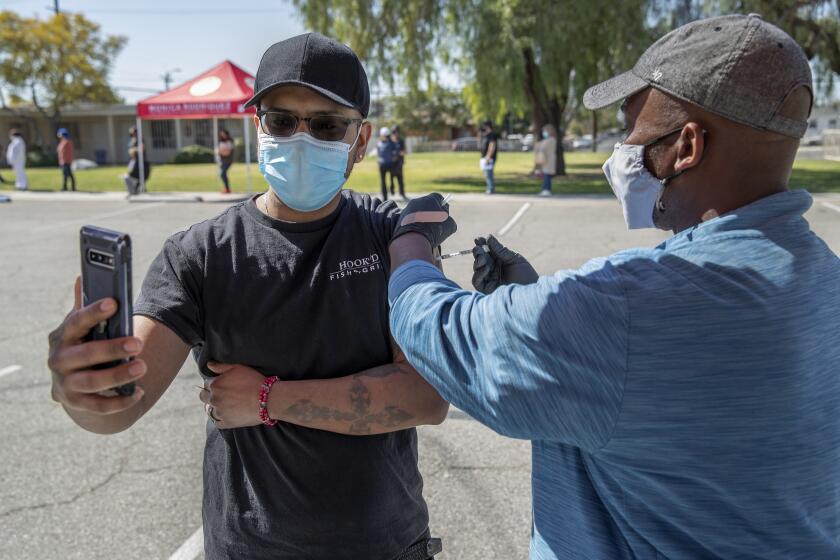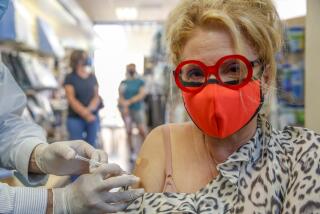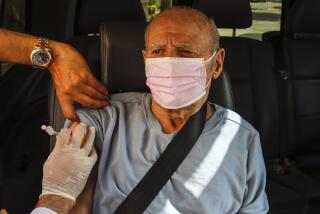How California plans to keep wealthy residents from taking COVID vaccines from the needy

- Share via
With California now dedicating 40% of its COVID-19 vaccine supply to underserved communities, one challenge is making sure the doses actually get to those in need.
Even before the change in policy, people in wealthier communities have used redistributed access codes to secure vaccine appointments intended to be reserved for lower-income neighborhoods.
One solution, Gov. Gavin Newsom said Thursday, will be to use single-use access codes to secure appointments, instead of group-access codes.
Newsom also acknowledged that counties have had problems with the state’s vaccine appointment system, My Turn, and pledged to continue improving it.
“We’re going to have to target appointments and make sure individuals that live in our targeted communities are actually the ones who get the specific codes, who get the appointment blocks,” Dr. Mark Ghaly, California’s Health and Human Services secretary,
said.
“And that becomes easier not just on My Turn, but through phone banking and other opportunities to get appointments for those who don’t have the technology at hand, the time on hand to sit there and refresh their browser over and over.”
California is sending 40% of vaccine supplies to communities hardest hit by COVID-19, hoping to improve equity, halt spread of the disease and hasten reopening. Will the radical shift work?
The misuse of codes for vaccine appointments reserved for lower-income Californians has been the subject of much debate and anger.
The loophole in the program came about because of its reliance on special access codes to allow users to book appointments through the My Turn system. State officials then asked nonprofits, faith-based groups, labor unions and other organizations to circulate the codes to their members for appointments in Oakland and Los Angeles.
But those codes also began circulating in emails and group texts among the wealthier, work-from-home set in Los Angeles who are not yet eligible for the vaccine. Many were younger than 65.
It’s unclear how many shots have been misappropriated. Some people who used the access codes said that they didn’t know they were doing anything wrong, and that they wouldn’t have signed up had they known the codes were earmarked for more vulnerable residents. Several said they regretted getting vaccinated.
The state will now reserve 40% of all COVID-19 vaccines for people living in areas that are generally low-income and have crowded housing. Specifically, they will be targeted to people living in roughly 400 ZIP codes in the lowest 25% of the census tracts ranked in the California Healthy Places index, a measure of socioeconomic opportunity that takes into account economic, social, education, housing and transportation factors.
Newsom said there will also need to be efforts to reach people at work, such as in agricultural fields or other workplaces, as well as in their homes.
Of California’s vaccine doses that have been injected, about 17% have gone to residents of the lowest-income areas of California. By contrast, 34% of all doses have been administered to people living in the wealthiest parts of California, Ghaly said.
That essentially means people living in the wealthiest parts of California have received double the vaccine doses of those living in the poorest parts of the state.
South and East L.A., parts of the San Gabriel and San Fernando valleys, areas near the L.A. and Long Beach ports and the Antelope Valley have the lowest vaccination rates.
In Southern California, underserved areas include South L.A., southeast Los Angeles County, East L.A., Long Beach, the eastern San Fernando Valley, Santa Ana, El Monte, Oxnard and heavily Latino communities along the 10 Freeway corridor between Pomona and San Bernardino.
In San Diego County, areas include neighborhoods east and southeast of downtown San Diego, as well as National City, Chula Vista, San Ysidro, City Heights and El Cajon.
Much of the Central Valley and parts of the Salinas Valley are included in the map of areas targeted for vaccination, including Sacramento, Stockton, Modesto, Salinas, Watsonville, Merced, Fresno and Bakersfield.
Ghaly also said that community clinics that have been working to support public health will be a part of the vaccine distribution efforts.
More to Read
Sign up for Essential California
The most important California stories and recommendations in your inbox every morning.
You may occasionally receive promotional content from the Los Angeles Times.

















